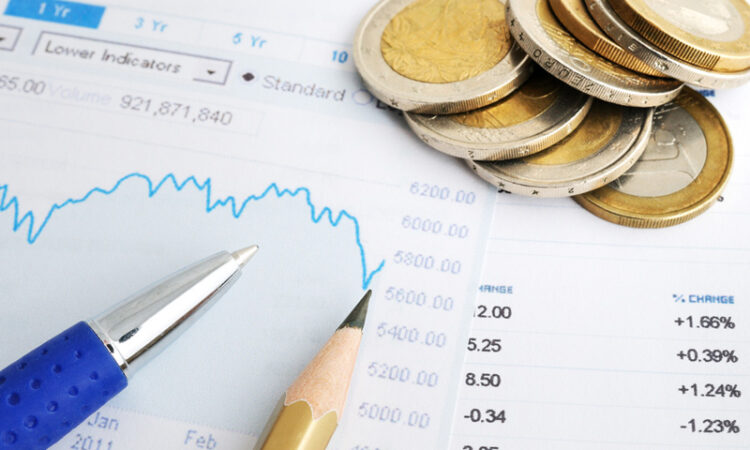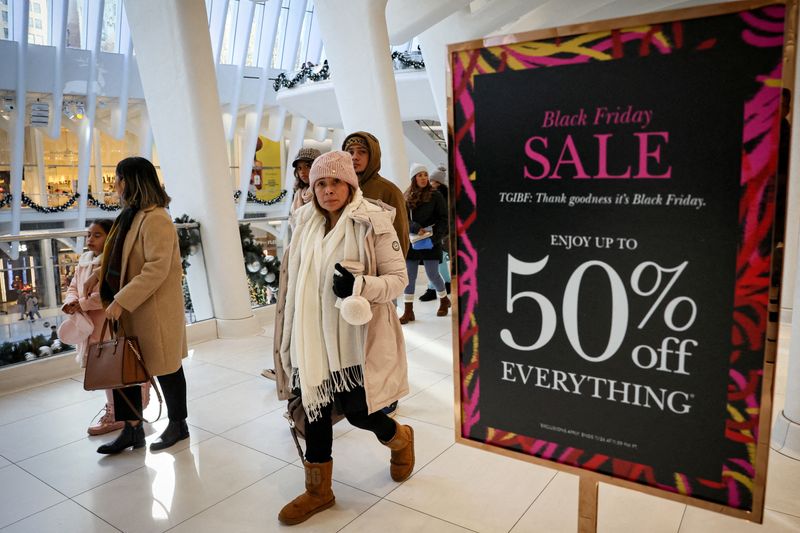

© Reuters. FILE PHOTO: People shop at the Shops at the Oculus and Westfield Shops during Black Friday shopping in New York City, U.S., November 24, 2023. REUTERS/Brendan McDermid/File Photo
By Lucia Mutikani
WASHINGTON (Reuters) – U.S. consumer sentiment improved in January, hitting the highest level in 2-1/2 years amid growing optimism over the outlook for inflation and household incomes, which bodes well for the economy’s prospects this year.
The better-than-expected reading in sentiment reported by the University of Michigan on Friday reflected a brightening of moods across all age and income groups, education and geographical locations as well as political affiliation.
It suggested that Americans were finally warming up to the economy’s resilience after much anxiety over high inflation, which has weighed on President Joe Biden’s popularity. Consumers’ inflation expectations over the next 12 months were the lowest in three years, good news for the Federal Reserve.
“The economy is not going backwards, it is going forwards at the start of 2024,” said Christopher Rupkey, chief economist atFWDBONDS in New York. “For the first time, massive interest rate hikes have not put a damper on economic growth.”
The University of Michigan’s preliminary reading on the overall index of consumer sentiment came in at 78.8 this month, the highest reading since July 2021, compared to 69.7 in December. Economists polled by Reuters had forecast a preliminary reading of 70.0.
It was the second straight monthly increase and occurred against the backdrop of a stock market rally, a fairly healthy labor market and gasoline prices that have held at lower levels.
The index has now rebounded nearly 60% after plumbing record lows in June 2022. It is now just 7% shy of the historical average since 1978. Joanne Hsu, the director of the University Of Michigan’s Surveys of Consumers, noted that “Democrats and Republicans alike showed their most favorable readings since summer of 2021.”
The survey’s reading of one-year inflation expectations fell to 2.9% this month, the lowest level since December 2020. That was down from 3.1% in December and put these inflation expectations within the 2.3%-3.0% range observed in the two years prior to the COVID-19 pandemic.
The survey’s five-year inflation outlook slipped to 2.8% from 2.9% in the prior month. They are now in the 2.9%-3.1% range seen for 26 of the last 30 months, but slightly higher relative to the 2.2%-2.6% band that prevailed in the two years before the pandemic.
Easing inflation expectations support economists’ views that the U.S. central bank will start cutting interest rates in the first half of this year. Since March 2022, the Fed has hiked its policy rate by 525 basis points to the current 5.25%-5.50% range.
Though there is no strong correlation between sentiment and consumer spending, the main engine of the economy, the surge could help to allay fears of a recession. Americans have maintained spending despite higher prices and borrowing costs as labor market tightness keeps wage growth elevated.
“Confidence alone is not a good indicator of where consumer spending is heading, but improved sentiment does reduce the risk that consumers increase their saving drastically this year, which is a key risk to our more upbeat outlook on consumer spending and GDP growth,” said Grace Zwemmer, an economic research analyst at Oxford Economics.
Stocks on Wall Street were trading higher. The dollar slipped against a basket of currencies. U.S. Treasury prices fell.
HOME SALES FALL
A separate report on Friday from the National Association of Realtors showed existing home sales fell in December to the lowest level in nearly 13-1/2 years. Home resales could, however, be close to turning the corner as mortgage rates decline and housing inventory shows signs of improving.
Existing home sales slipped 1.0% last month to a seasonally adjusted annual rate of 3.78 million units, the lowest level since August 2010. Home resales are counted at the closing of a contract. The sales in December likely reflected contracts signed in the prior two months, when the average rate on the popular 30-year fixed-rate mortgage was stuck above 7.0%.
The 30-year fixed-rate mortgage rate averaged 6.60% this week, an eight-month low, compared to 6.66% in the prior week, according to data from mortgage finance agency Freddie Mac.
Home resales, which account for a large portion of U.S. housing sales, dropped 18.7% to 4.09 million units in 2023, the lowest level since 1995. There were 1.0 million previously owned homes on the market in December, up 4.2% from a year ago, but still below the nearly 2 million units before the pandemic.
At December’s sales pace, it would take 3.2 months to exhaust the current inventory of existing homes, up from 2.9 months a year ago. A four-to-seven-month supply is viewed as a healthy balance between supply and demand.
With supply still tight, the median existing home price increased 4.4% from a year earlier to $382,600 in December.
The pace of increase in house price inflation, however, slowed in the fourth quarter. The median house price on an annual basis rose 0.9% to a record high of $389,800 in 2023.
“With mortgage rates now much lower, somewhat greater supply could support the level of sales into the first quarter as demand picks up,” said Veronica Clark, an economist at Citigroup. “We would also expect stronger demand to put further upward pressure on home prices after some slowing in the fourth quarter.”






